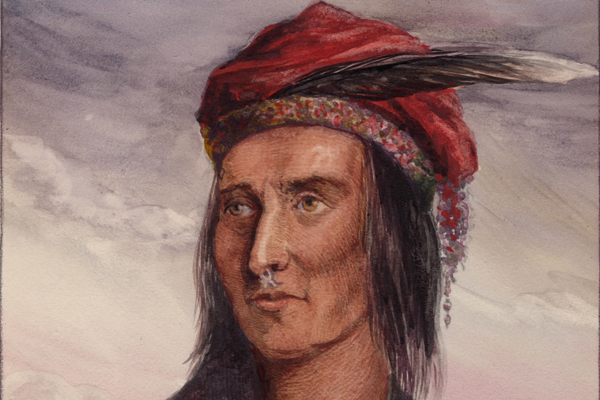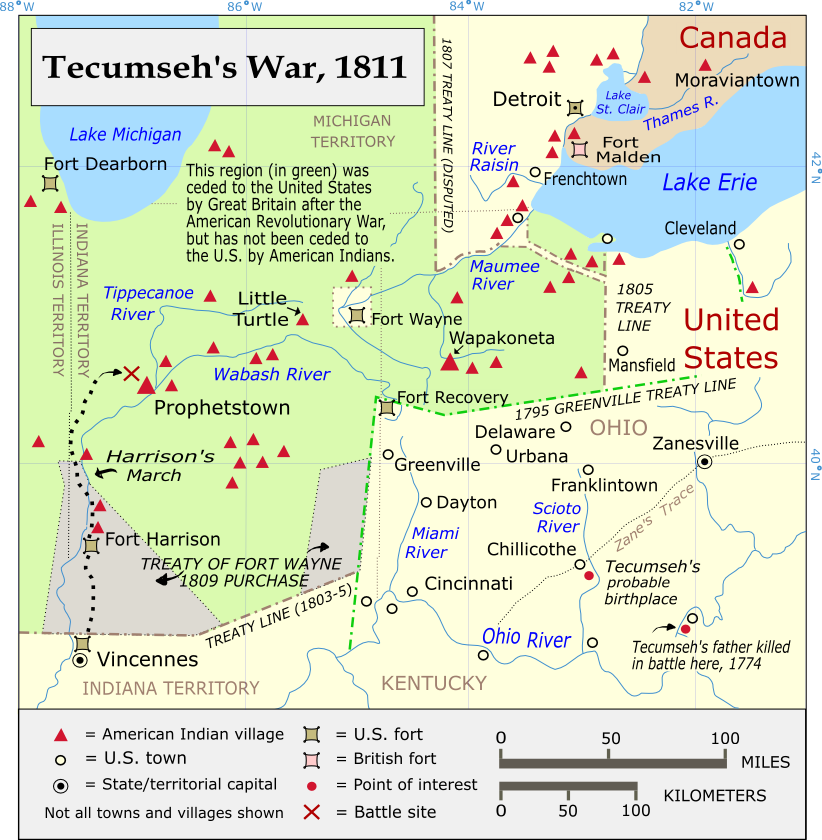A Shooting Star: The Radical Life of Tecumseh
Posted by Pete on Oct 5th 2020
Today in 1813, the Shawnee leader Tecumseh was killed in battle while fighting to save his people’s land.

Before there was a 'Canada' or a 'USA', the ancestors of Tecumseh (1768-1813) lived in the land that Europeans renamed 'North America'.
The son of a Shawnee war chief, Tecumseh – meaning ‘Shooting Star’ – was born in what’s now Ohio.

He grew up amid the colonial violence of European settlers.
His father, Puckshinwa, was killed in battle by frontiersmen in 1774 and during the American War of Independence countless Shawnee villages were destroyed by Patriot militiamen.
Knowing only violence from white colonists, the young Tecumseh grew up determined to fight to save his people from annihilation.
Tecumseh first went to battle against colonialism in 1783, when he joined a Shawnee warband fighting to stop settlers moving down the Ohio River from Pennsylvania.
In 1789 he rode south with his brother, Chiksika, to fight alongside the Cherokee in Tennessee.
The next few years were especially tough for Tecumseh.
His brother was killed in battle in 1792 and Native Americans in the North suffered a heavy defeat by the US at the Battle of Fallen Timbers in 1794.

Against this onslaught, Tecumseh soon enough realized that only through unity did Native America stand a chance against the United States.
With his younger brother, a Shawnee religious leader called Tenskwatawa, he began rallying Natives to fight against US expansion together.
With this message of fraternity and common ownership, Tecumseh gathered an intertribal alliance of 3,000 people to a village called Prophetstown in the southwestern Great Lakes.
Then, in 1811, this newfound Native American Confederacy went to war.
The future President, William Henry Harrison, was then governor of the Indiana Territory.
Greedy for land not his own, he bribed a number of Native Chiefs into ceding a massive portion of modern-day Ohio to the United States.
Tecumseh refused to recognize the concession and demanded Harrison rescind it.
Harrison would not budge, and war followed – Tecumseh’s War.
Despite a courageous defense, Prophetstown was sacked by US soldiers in November 1811.
Tecumseh’s War then became wrapped up in the War of 1812 between Britain and the United States. He allied with the British, serving bravely at the Siege of Detroit in August of that year.
Confusingly, the ‘War of 1812’ went on for three years, and in 1813 Tecumseh and his soldiers had to withdraw with the British into Upper Canada as the US army went on the offensive.
But Tecumseh’s alliance with Britain was to protect Native American lands, not serve the British Empire. He would only go so far into Canada before insisting the army take a stand.
Tecumseh made his stand at the Battle of the Thames on 5 th October 1813 – 207 years ago today – where he was killed in action.

Tecumseh has been claimed by Canadian national history as its defender against the United States, but he belongs to an older, cross-border history of indigenous resistance in North America.
It is the story of Crazy Horse and Sitting Bull, and of the American Indian rights activists of the 1960s and ‘70s.
And the struggle goes on, from the Dakotas to Alaska.
Native America – the heirs of Tecumseh – is unbowed after all these years. This is a living, radical history of struggle and a better world still there to be won.
